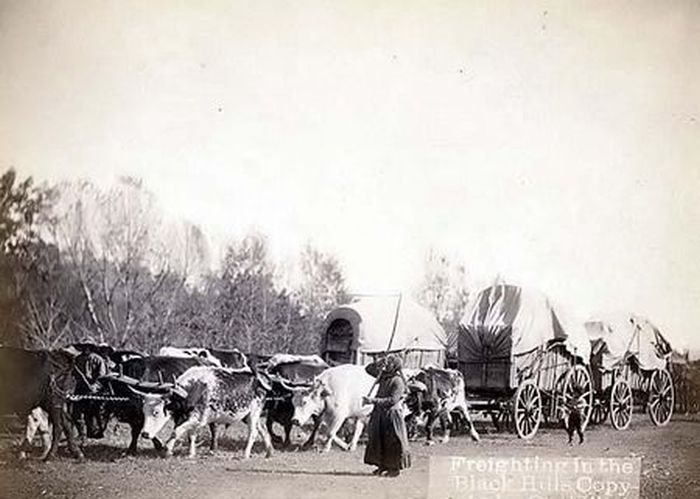|
|
History: American Old West, United States
|
By the 1870s and 1880s, cattle ranches expanded further north into new grazing grounds and replaced the bison herds in Wyoming, Montana, Colorado, Nebraska and the Dakota territory, using the rails to ship to both coasts. Many of the largest ranches were owned by Scottish and English financiers. The single largest cattle ranch in the entire West was owned by American John W. Iliff, "cattle king of the Plains", operating in Colorado and Wyoming. Gradually, longhorns were replaced by the American breeds of Hereford and Angus, introduced by settlers from the Northwest. Though less hardy and more disease-prone, these breeds produced better tasting beef and matured faster.
Then disaster struck the cattle industry. A terribly severe winter engulfed the plains toward the end of 1886 and well into 1887, locking the prairie grass under ice and crusted snow which starving herds could not penetrate. After their livestock died by the thousands, great syndicates and “barons”, already under pressure from declining prices and tightening credit, were financially ruined. Many of them had spent much more each year than they made to expand their land and cattle empires, but now they were forced to liquidate most of their remaining holdings just to pay for living expenses and to help satisfy a host of demanding creditors.
Sheep grazing took over as sheep were easier to feed and needed less water. However, sheep also helped cause ecological changes that enabled foreign grasses to invade the Plains and also caused increased erosion. Open range cattle ranching came to an end and was replaced by barbed wire spreads where water, breeding, feeding, and grazing could be controlled. This led to "fence wars" which erupted over disputes about water rights. Cattlemen and sheep ranchers sometimes engaged in violence against each other as did large and small cattle ranchers, culminating in the Johnson County War.
Anchoring the booming cattle industry of the 1860s and 1870s were the cattle towns in Kansas and Missouri. Like the mining towns in California and Nevada, cattle towns such as Abilene, Dodge City, and Ellsworth experienced a short period of boom and bust lasting about five years. The cattle towns would spring up as land speculators would rush in ahead of a proposed rail line and build a town and the supporting services attractive to the cattlemen and the cowboys. If the railroads complied, the new grazing ground and supporting town would secure the cattle trade. However, unlike the mining towns which in many cases became ghost towns and ceased to exist after the ore played out, cattle towns often evolved from cattle to farming and continued on after the grazing lands were exhausted. In some cases, resistance by moral reformers and alliances of businessmen drove the cattle trade out of town. Ellsworth, on the other hand, floundered as the result of Indian raids, floods, and cholera.
|
|









